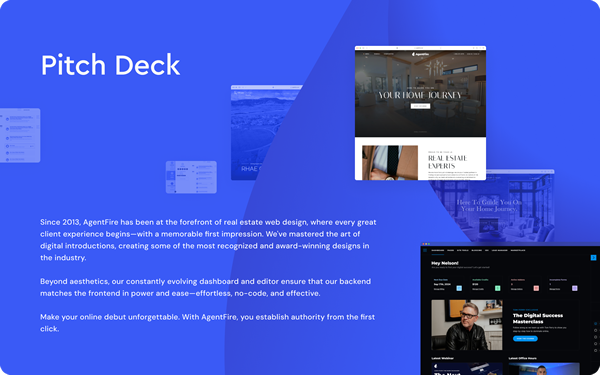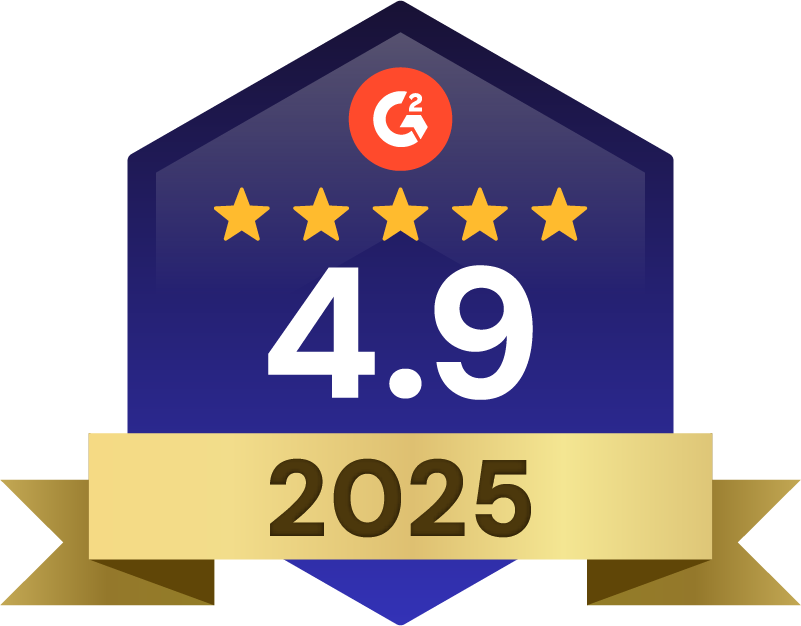This article practical tips on identifying key content pillars, planning posts, and using tools like scheduling software. Learn how to select the right platforms, create engaging content, and adjust your strategy based on performance data for impactful results.
Content Marketing Technology
Social media has become a vital tool for real estate professionals to connect with clients, showcase properties, and establish their brand identity. However, simply posting haphazardly won’t yield the desired results; a well-structured plan is essential.
Enter the real estate social media calendar—a strategic tool that outlines the timing and content of your social media posts. By crafting a content calendar tailored to your objectives and target audience, you can maintain a consistent, engaging, and influential online presence. This article will walk you through the process of creating a successful social media calendar for your real estate business, offering practical tips and best practices to elevate your social media game and achieve tangible results.

What is a Real Estate Social Media Calendar?
A real estate social media calendar is a strategic tool that maps out the timing and content of your social media posts in advance. It serves as a content roadmap, helping you plan, organize, and schedule posts to maintain a consistent and engaging online presence aligned with your marketing goals.

Why You Need a Real Estate Social Media Calendar
Implementing a social media calendar offers numerous advantages for your real estate marketing efforts:
- Strategic Planning: A calendar enables you to align your content with your marketing objectives and your audience’s interests, creating a cohesive and impactful social media presence.
- Efficiency: By planning and scheduling posts in advance, you can streamline your social media management, saving time and effort in the long run.
- Consistency: A well-structured calendar helps you maintain a regular posting schedule, ensuring your audience receives a steady flow of valuable content.
- Increased Engagement: By carefully curating a mix of content—from property listings and market insights to client stories and behind-the-scenes glimpses—you can capture your audience’s attention, foster interaction, and build increased engagement.
- Measurable Results: A structured content calendar allows you to easily track and analyze your social media performance, enabling you to refine your strategy based on data-driven insights.
Choosing the Right Social Media Platforms
To maximize the impact of your social media efforts, it’s crucial to select the platforms that best align with your target audience and marketing goals. Here’s an overview of the most popular platforms for real estate professionals:
With its vast user base and robust advertising options, Facebook remains a top choice for real estate marketing. It’s an ideal platform for sharing property listings, client success stories, and engaging with your local community through targeted ads and groups.
Instagram’s visual nature makes it perfect for showcasing stunning property photos, virtual tours, and behind-the-scenes content. Its Stories and Reels features allow you to create immersive and interactive experiences for your followers.
LinkedIn is a valuable platform for networking with other professionals, sharing industry insights, and establishing yourself as a thought leader. It’s particularly useful for reaching high-net-worth individuals and luxury property buyers.
Twitter’s fast-paced environment is ideal for sharing real-time updates, news, and market trends. It’s also an excellent platform for engaging in conversations and building relationships with potential clients and industry influencers.
To determine the best platforms for your business, consider the following factors:
- Target Audience: Analyze your ideal client’s demographics, interests, and online behavior to identify the platforms they’re most active on.
- Content Type: Consider the type of content you plan to create and share. Visual platforms like Instagram and Pinterest may be more suitable for property photos and videos, while text-based platforms like Twitter and LinkedIn are better for industry insights and discussions.
- Goals: Align your platform choices with your marketing objectives, whether it’s generating leads, building brand awareness, or establishing yourself as a local expert.
By carefully selecting the right social media platforms and tailoring your content for each one, you can expand your reach and effectively connect with your target audience.

Steps to Create Your Real Estate Social Media Calendar
Step 1: Identify Key Content Pillars
Content pillars are the foundation of your social media plan, providing a clear direction for the themes and topics you’ll consistently cover. These pillars should align with your brand’s personality and resonate with your audience’s interests. For real estate professionals, strong content pillars may include:
- Property Highlights: Showcase the unique features of your listings through detailed photos, video tours, and scheduled viewing times, keeping your audience informed and engaged.
- Market Insights: Share updates on housing trends, pricing changes, and relevant economic news, establishing yourself as a trusted source of real estate knowledge.
- Client Success Stories: Share testimonials and stories from satisfied clients to build trust and credibility, encouraging potential clients to choose your services.
- Community Features: Highlight local attractions, events, and businesses to demonstrate your strong ties to the area, reinforcing your role as a community-focused real estate professional.
- Educational Resources: Provide advice on various aspects of real estate transactions, such as negotiation strategies or investment opportunities, helping you build long-term relationships with your audience by offering valuable information.
When selecting your content pillars, consider your unique strengths and what matters most to your target audience. By focusing your content strategy on these factors, you can create a consistent and engaging social media presence that encourages interaction and opens up new business opportunities.
Step 2: Plan and Schedule Your Content
With your main topics established, it’s time to plan ahead and organize your posts. Planning in advance helps you maintain consistency, stay organized, and save time in the long run. Here’s how you can effectively plan and schedule your content:
- Create a Posting Blueprint: Use tools like Trello or a simple Google Sheet to map out your content ideas for the upcoming weeks or months. Assign specific dates for each post, ensuring a diverse mix across your main topics. This broader view helps keep your content varied and strategic.
- Batch Content Production: Set aside dedicated time to brainstorm and create your posts in batches. Use tools like Canva to help maintain a steady supply of content. You can also tailor the material to suit different platforms.
- Use Automation Platforms: Consider using scheduling software like Buffer or Sprout Social to automate your posts, ensuring they go live on schedule even when you’re offline. These tools also provide insights into engagement, helping you refine your strategy based on what resonates with your audience.
- Align with Market Trends: Adapt your content to reflect the evolving nature of real estate. Highlight different themes—such as preparing homes for winter or summer buying tips—at the appropriate times. This keeps your content relevant and interesting for your audience.
- Leave Room for Real-Time Updates: While having a plan keeps you on track, it’s important to leave space for spontaneous posts about breaking news, local events, or unexpected client successes. This flexibility demonstrates your active engagement with the market and community.
Planning your content in advance and using scheduling tools helps you maintain a steady, engaging social media presence. Monitor analytics to see what resonates most with your audience and adjust your strategy accordingly.
Step 3: Creating Engaging Content
With your content themes and posting schedule in place, it’s time to focus on crafting posts that capture your audience’s attention. Eye-catching and interactive content can significantly boost engagement with your posts. Here are some ways to elevate your real estate social media presence:
- Use Captivating Images: Select imagery that appeals to your audience’s tastes. Enhance photos with simple edits to make them stand out, ensuring they align with your brand’s aesthetic.
- Diversify Content Formats: Maintain your audience’s interest by varying the types of content you share. Include formats like infographics for market data, short video clips of property highlights, and interactive tours. These different formats cater to various audience preferences.
- Craft Relatable Stories: Engage your audience with compelling narratives. Highlight community events or share the journey of a property from listing to sale. These stories can create emotional connections and make your content more memorable.
- Provide Value: Share content that enriches your audience’s understanding of the real estate market. This could include interactive guides, home maintenance tips, or insights into market trends. Such informative content positions you as a valuable resource.
- Be Authentic: Infuse your posts with a personal touch to differentiate your brand. Whether by sharing everyday experiences in real estate or showcasing your team’s dynamics, authenticity can strengthen your connection with followers.
Creating engaging content is an ongoing process. Monitor how your audience responds to different posts and adjust your approach as needed. Remain open to experimenting with new ideas and technologies to keep your social media strategy fresh and effective.
Step 4: Utilize User-Generated Content and Reviews
Incorporating user-generated content (UGC) and client reviews into your real estate social media plan can infuse your marketing with fresh energy. UGC, such as candid photos or short video testimonials from clients, provides an authentic perspective that resonates with potential buyers. Sharing these real experiences enhances your credibility and highlights the unique benefits of your services.
To encourage sharing, invite clients to share their experiences by offering incentives or creating fun post-purchase activities. Encourage them to leave reviews on popular platforms like Google or Facebook, and ensure you respond to each review with a personal touch. Using branded hashtags or hosting themed social media challenges can also inspire clients to share their stories, organically expanding your reach.
When organizing your content calendar, integrate UGC and reviews to maintain variety and engagement. Transform client testimonials into visual stories, feature them in dedicated blog posts, and sprinkle genuine client photos throughout your social channels. By consistently highlighting real client experiences, you not only attract new prospects but also reinforce your reputation as a trusted real estate expert in your area.
Step 5: Monitor and Adjust Your Strategy
Monitoring your social media efforts is crucial for understanding their effectiveness and identifying areas for improvement. Tools like Facebook Insights and Instagram Analytics provide valuable data about your content’s reach, audience engagement, and follower demographics. This information can help you identify trends and opportunities for optimization.
In addition to these platform-specific tools, you can use the analytics inside tools like Buffer or Sprout Social to gain a holistic view of your performance across all your social media channels. These tools offer robust features for benchmarking against competitors, analyzing audience behavior, and generating detailed reports to inform your future strategies.
Analyzing performance data enables you to refine your content strategy intelligently. By identifying the factors that contribute to your top-performing posts—such as format, timing, or topic—you can replicate these successes across different platforms. Conversely, understanding why certain posts underperform allows you to adjust your strategy, whether by modifying the messaging, visuals, or posting schedule. Regularly reviewing and updating your social media plan is essential for staying relevant and keeping your audience engaged.

Advanced Tips for Maximizing Engagement
Ready to take your real estate social media engagement to new heights? Here are some innovative strategies to captivate your audience and elevate your online presence:
- Interactive Polls and Quizzes: Engage your audience using interactive features like polls and quizzes. Inquire about their favorite home styles, neighborhood preferences, or opinions on market trends. This not only encourages interaction but also provides valuable insights into your audience’s interests, helping you tailor your future content.
- Live Streaming Events: Leverage live streaming to connect with your audience in real-time. Host virtual open houses, Q&A sessions, or panels with industry experts on popular real estate topics. Live streaming fosters an engaging atmosphere that encourages participation and strengthens your community ties.
- Collaborations with Local Experts: Partner with local professionals, such as interior designers, architects, or notable community members, to expand your reach and enrich your content. Collaborate on workshops, create joint content, or feature their insights on your platforms. These partnerships enhance your credibility and introduce your brand to new audiences through trusted channels.
- Augmented Reality (AR) and Virtual Tours: Leverage AR technology to provide immersive experiences for potential buyers. Offer virtual tours that allow clients to explore properties remotely, or use AR to showcase home improvements and furniture placements. These innovative tools differentiate your offerings and create memorable interactions for prospective clients.
Final Thoughts
Developing a comprehensive social media calendar is essential for real estate professionals seeking to enhance their online presence. By aligning your content strategy with clear objectives and a deep understanding of your audience, you can create an online presence that genuinely resonates with your target market.
Implementing the strategies outlined in this guide—from establishing content themes and optimizing your scheduling tactics to analyzing performance metrics and incorporating authentic user contributions—can boost your engagement and drive meaningful results for your business. A well-structured social media calendar can help solidify your brand’s position in the dynamic real estate market.
As you embark on crafting your real estate social media calendar, remember that consistency, authenticity, and innovation are key to captivating your audience and driving real results.
At AgentFire we’re here to support you on this journey, with powerful tools and expertise to help you build a thriving online presence. Book a demo with us today to discover how we can elevate your real estate marketing to new heights.








